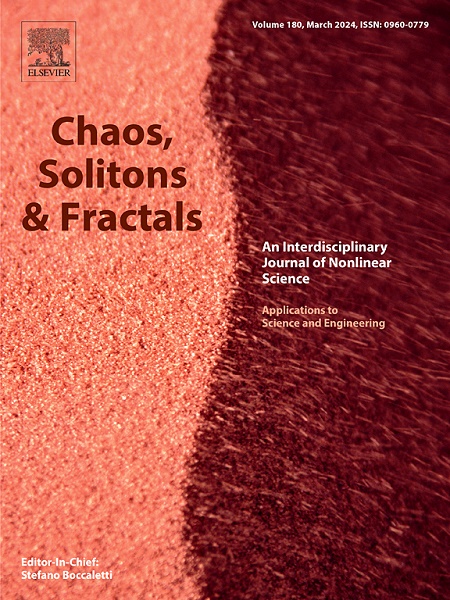Nonlinear internal resonances of rotating twisted multilayer functionally graded graphene nanoplatelet-reinforced composite blades
IF 5.6
1区 数学
Q1 MATHEMATICS, INTERDISCIPLINARY APPLICATIONS
引用次数: 0
Abstract
The nonlinear responses of primary resonance characteristics for the composite rotating blade are investigated in the presence of 1:2 internal resonance, where two primary resonance cases are considered, namely, the first mode and second mode being excited. The composite properties can be deduced via modified Halpin-Tsai micromechanics model and the rule of mixture. Lagrange formulation is employed in conjunction with Ritz procedure for the determination of the ordinary differential equations (ODEs). Then, modulation equations associated with two resonance relationships are obtained via the method of multiple scales for purpose of seeking steady state responses. Comparisons are conducted to demonstrate the accuracy of the proposed method. Bifurcations and chaotic dynamics are conducted in the form of double-parameter maps. Frequency response curves and force response curves are presented when one mode is excited. The influence of various parameters such as excitation amplitude and detuning parameter on nonlinear responses is assessed. The investigation illustrates the existence of softening, hardening and softening-hardening nonlinear resonance behaviors identified by jumping and the corresponding multiple value phenomena.
旋转扭曲多层功能梯度石墨烯纳米片增强复合材料叶片的非线性内部共振
研究了1∶2内共振存在时复合材料旋转叶片主共振特性的非线性响应,其中考虑了第一模态和第二模态被激发两种主共振情况。通过修正的Halpin-Tsai细观力学模型和混合规律可以推导出复合材料的性能。利用拉格朗日公式和里兹过程求解常微分方程。然后,通过多尺度法得到两种共振关系的调制方程,以寻求稳态响应。进行了比较,以证明所提出的方法的准确性。分岔和混沌动力学以双参数映射的形式进行。给出了受激一模态时的频率响应曲线和力响应曲线。评估了激励幅值和失谐参数等参数对非线性响应的影响。研究表明,存在以跳变识别的软化、硬化和软化-硬化非线性共振行为以及相应的多值现象。
本文章由计算机程序翻译,如有差异,请以英文原文为准。
求助全文
约1分钟内获得全文
求助全文
来源期刊

Chaos Solitons & Fractals
物理-数学跨学科应用
CiteScore
13.20
自引率
10.30%
发文量
1087
审稿时长
9 months
期刊介绍:
Chaos, Solitons & Fractals strives to establish itself as a premier journal in the interdisciplinary realm of Nonlinear Science, Non-equilibrium, and Complex Phenomena. It welcomes submissions covering a broad spectrum of topics within this field, including dynamics, non-equilibrium processes in physics, chemistry, and geophysics, complex matter and networks, mathematical models, computational biology, applications to quantum and mesoscopic phenomena, fluctuations and random processes, self-organization, and social phenomena.
 求助内容:
求助内容: 应助结果提醒方式:
应助结果提醒方式:


